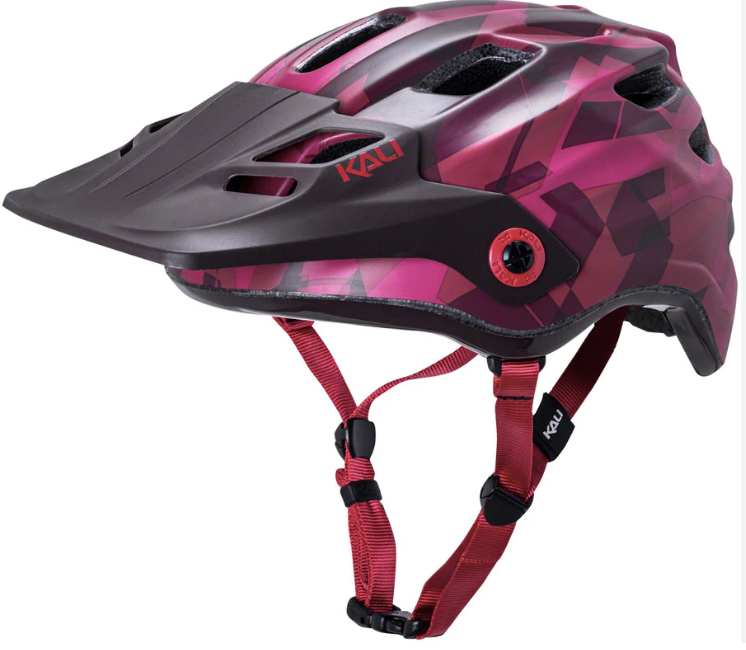Best Full-Face Helmets for Mountain Biking
A full-face helmet is critical for mountain bikers, particularly those tackling downhill, enduro, and freeride terrain. The right helmet provides essential protection while balancing comfort, ventilation, and style. Here are some of the best full-face mountain bike helmets on the market:
Top Full-Face Helmets
Bell Sanction: has a lightweight design that’s ideal for riders seeking comfort on long rides, excellent ventilation for airflow, keeping you cool on intense trails, and it’s budget-friendly without compromising safety and performance.
It’s best for beginner to intermediate riders and casual downhill or enduro enthusiasts.

Fox Proframe: this low-profile, ultra-lightweight design is great for downhill and enduro disciplines. The integrated chin bar provides a balance of protection and breathability. An advanced ventilation system features multiple large intake and exhaust ports, and MIPS technology is included for rotational impact protection.
It’s best for riders who want a lightweight, versatile helmet for aggressive trail riding.

Giro Switchblade MIPS: the removable chin bar allows for quick transitions between full-face and open-face configurations. This helmet has aggressive styling and robust construction for demanding conditions and is certified to meet downhill and trail helmet standards (ASTM and CPSC). Plush padding and an adjustable Roc Loc system make for a secure and comfortable fit.
It’s best for all-mountain riders who need versatility and a sleek design.

Freehub Magazine
Troy Lee Designs (TLD) D3 Fiberlite: a lightweight composite shell provides excellent protection without excessive bulk. You’ll find an outstanding ventilation system featuring multiple intake and exhaust ports. Known for its stylish graphics and premium build quality, this helmet also includes comfortable interior padding for extended wear.
It’s best for competitive downhill riders who prioritize safety and performance.

Kali Protectives Maya 3.0 (Note: technically not a full-face helmet): Built for all-mountain and enduro riding, with extended rear coverage for added safety, it features Kali’s Composite Fusion technology for improved impact absorption. Lightweight and aggressively styled, it offers excellent ventilation.
It’s best for riders looking for a lightweight, half-shell option with exceptional protection.

Key Features to Consider When Choosing a Full-Face Helmet
Safety Certifications: look for helmets that meet or exceed safety standards like CPSC, EN 1078, or ASTM F1952 for downhill biking.
Fit and Comfort: a secure, snug fit is essential for protection. Most helmets have adjustable systems like dials or padding inserts to customize the fit.
Ventilation: opt for helmets with well-designed airflow systems to keep you cool during intense rides. Large intake and exhaust vents are critical, especially for downhill and enduro disciplines.
Weight: a lightweight helmet reduces fatigue, particularly during long rides or races. Carbon fiber models are often lighter but come at a higher price.
Chin Bar Design: some helmets, like the Giro Switchblade, feature removable chin bars for added versatility, allowing for both full-face and open-face configurations.
Rotational Impact Protection: look for advanced safety features like MIPS or proprietary technologies like POC’s SPIN to reduce the effects of rotational forces during crashes.
Additional Recommendations
POC Coron Air SPIN: renowned for its SPIN impact protection system and excellent ventilation.

Fox Rampage Pro Carbon: combines a lightweight carbon fiber shell with an aggressive design for elite riders.

Bell Super DH MIPS: features a removable chin bar, making it a versatile option for both trail and downhill use.

Tips for Proper Fit & Maintenance
Fit Test: the helmet should sit level on your head, with no gaps between the padding and your skull. Tighten any retention systems to ensure stability.
Strap Adjustment: the chin strap should fit snugly under your chin without pinching. A proper fit prevents the helmet from shifting during impact.
Care and Replacement: regularly clean the helmet’s interior padding and inspect for damage. Replace helmets every 3–5 years or immediately after a significant impact.
Choosing the right full-face helmet is vital for safety and performance on the trail. The best helmets offer a blend of protection, comfort, and versatility. Ride on!
